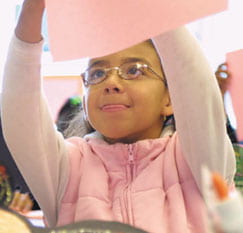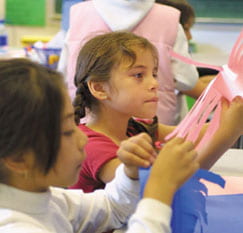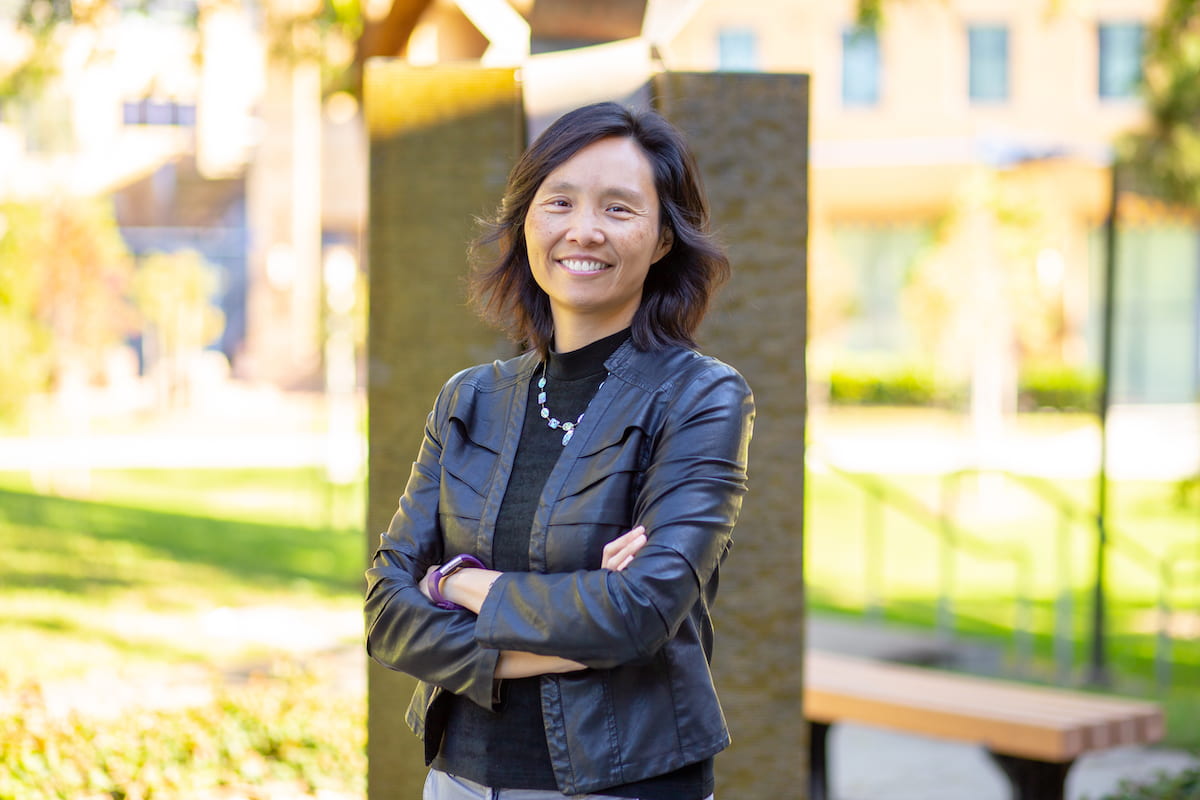State of the arts
Recently expanded to five states, UCI ArtsBridge brings kids ‘many souls and many generations’
Orange County students may be dancing their way to higher test scores. In fact they may also be painting, singing and acting their way to better grades.
It is all part of latest chapter in the history book of UCI’s ArtsBridge, which sends the university’s brightest art scholars into public schools to teach art.
Although art for art’s sake would certainly justify offering it in public schools, ArtsBridge director Keith Fowler sees a higher purpose.
“We don’t know what the mechanism is, but SAT scores are higher for students who have had four years of art, and not just in one art,” says Fowler, also a drama professor in the Claire Trevor School of the Arts. “So we’re experimenting with three elementary schools where we are offering four years of art to all students. We want to measure the impact of the arts on students.”
Created by former UCI arts dean Jill Beck in 1996, ArtsBridge brings a variety of arts programs from music and dance, to visual art and drama to Orange County public schools. The program proved so successful that in 1999 ArtsBridge expanded to eight UC campuses.
In October 2001, the U.S. Department of Education’s Fund for the Improvement of Postsecondary Education awarded ArtsBridge $846,500 to expand across the nation. The new participating sites include Arizona State University, the University of Colorado, New York University, the University of Utah, and California State Universities in Sacramento, San Bernardino and Long Beach.
ArtsBridge was designed to help fill the void left after decades of budget cuts decimated art education, particularly in elementary and middle schools.
“Whenever there is a budget cut, the first to go are ‘frill’ programs,” Fowler says, “and the arts, unfortunately, come under that category in the public and political imagination. This has been going on since the ‘70s and ‘80s.
“Yet, just about every time we cut more of the arts, test scores in core areas—science, math, language arts and social studies—have dropped. So we cut some more to put more effort into math and science. And the test scores drop some more. There is a correlation here.
“Some researchers suggest it has something to do with the fundamental stimulation of the brain. Kids learn to their full capacity and certainly with more pleasure when art is part of the curriculum.
“It certainly contributes to the character of kids. Art brings together all the other elements of their education and celebrates them. Arts are celebratory. Arts are appealing. Kids like to do art. To do art, you must draw on other educational subjects, whether they are language arts for drama or math, and geometry for music and drawing.”
To further advance overall educational goals, ArtsBridge scholars work with the regular teachers. The teachers determine which core subjects they want to reinforce and the scholars bring them more to life through their arts programs.
“The arts can be taught by themselves or better used as a teaching tool. For example, you can use drama while studying the California gold rush, by having the kids act out the parts. The kids get and retain the information better than if it is read to them or they repeat aloud.”
ArtsBridge plans to bring in educational researchers to learn from the students in the four-year program. The researchers will examine and measure links between the arts and improved overall educational performance.
But even without such links, Fowler would champion the arts for their overall goodness.
“We don’t want to lose the civilizing function of art. Arts are the major way of having a communal connection, a sense of diversity, a sense of crossing outside of your limited experience and experiencing something else.
“Every time you see a painting, you are seeing the world reconceived by another mind and you enter into that other person’s experience. When you see an effective drama, it gives you vicarious experience that you won’t have in your own life. You can’t have all the experiences, so art is opening you up to the many souls and many generations of other times and other cultures.
“Art increases your range of experience so you can grow.”




